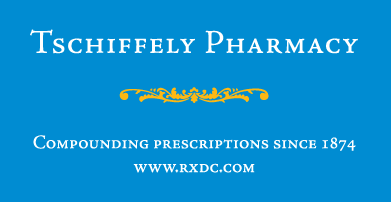
To Buy Neurontin Online Visit Our Pharmacy ↓

Understanding Epilepsy: Basics and Statistics
Epilepsy, a neurological disorder characterized by recurrent seizures, affects millions worldwide. Seizures occur due to sudden, uncontrolled electrical disturbances in the brain, leading to diverse symptoms ranging from momentary confusion to loss of consciousness. According to the World Health Organization, approximately 50 million people live with epilepsy globally, making it one of the most common neurological conditions. Though exact causes often remain elusive, known triggers include genetic factors, brain trauma, and infections. Understanding these basics helps in navigating treatment options effectively.
| Statistic | Value |
|---|---|
| Global Epilepsy Cases | ~50 million |
| Annual New Cases per 100,000 Population | 49 |
Neurontin: a Brief History and Development

Neurontin, the brand name for gabapentin, was originally developed in the 1970s by researchers at Parke-Davis, a subsidiary of Warner-Lambert, with the initial aim of creating a muscle relaxant. However, during clinical trials in the 1980s, it was discovered to have anticonvulsant properties, making it potentially effective for epilepsy treatment. This shifted its development focus, and by 1993, Neurontin was approved for use in Europe as an adjunctive therapy for partial seizures in adults.
Neurontin gained FDA approval in the U.S. in 1994, solidifying its role in epilepsy management. Its journey from a muscle relaxant to an anticonvulsant is notable for illustrating the serendipitous nature of drug development. As research expanded, Neurontin also found use in treating neuropathic pain, showcasing its versatility beyond epilepsy treatment.
How Neurontin Works in the Brain
Neurontin, known generically as gabapentin, has a unique mechanism of action that sets it apart from other medications used in epilepsy management. Unlike traditional antiepileptic drugs, Neurontin does not interact directly with GABA receptors or sodium channels. Instead, it binds to a specific subunit of voltage-gated calcium channels in the nervous system. This binding modulates the release of excitatory neurotransmitters, effectively stabilizing neuronal firing and reducing the hyperexcitability that characterizes epileptic seizures.
The key to Neurontin's efficacy lies in its ability to alter neurotransmitter activity without fully inhibiting synaptic function. By modulating calcium channel activity, it decreases the release of neurotransmitters such as glutamate and norepinephrine, both of which play significant roles in excitatory signaling. This selective targeting provides a calming effect on the overactive neurons, making it a valuable option for individuals who experience partial seizures, particularly when other medications may not be suitable.
Moreover, the specificity of Neurontin's action contributes to its relatively favorable side effect profile compared to other antiepileptic drugs. The modulation of calcium channel function rather than direct inhibition allows for a reduction in seizure frequency while minimizing interference with normal neuronal processes. This approach helps manage epilepsy symptoms more effectively for many patients, illustrating why Neurontin continues to be a crucial part of comprehensive epilepsy care.
Benefits of Neurontin for Epilepsy Treatment

Neurontin, also known by its generic name gabapentin, is highly regarded for its ability to effectively manage epileptic seizures. By reducing the excessive electrical activity in the brain, Neurontin helps to stabilize nerve cells, thereby decreasing the frequency and intensity of seizures. This makes it a vital component in the arsenal against epilepsy, particularly for patients whose seizures are not adequately controlled by other treatments. Its use is especially beneficial in partial seizures, which are among the most common types of epilepsy.
Moreover, Neurontin’s impact extends beyond mere seizure management. Patients often report an improved quality of life, as the medication helps alleviate anxiety and mood disturbances commonly associated with epilepsy. Neurontin can also be combined with other antiepileptic drugs, offering flexible treatment options tailored to individual needs. This versatility contributes to its widespread popularity as a dependable therapeutic option.
Possible Side Effects to Keep in Mind
When considering Neurontin for epilepsy, it's essential to be aware of its potential side effects. Patients commonly report dizziness and fatigue, which can affect their daily activities. Some may also experience coordination issues, making it crucial for them to avoid activities like driving until they understand how Neurontin affects them.
In addition to these common side effects, some individuals might encounter more severe reactions, such as mood changes or swelling in extremities. Regular monitoring by healthcare professionals can help manage these effects effectively. It's important to communicate openly with a doctor about any unexpected reactions to Neurontin to ensure a safe and effective treatment plan.
| Potential Side Effects | Frequency |
|---|---|
| Dizziness | Common |
| Fatigue | Common |
| Coordination Issues | Common |
| Mood Changes | Less Common |
| Swelling in Extremities | Less Common |
Neurontin: Insights from Experts and Patients
Dr. Jane Edwards, a renowned neurologist, shares that Neurontin has significantly broadened treatment options for patients with epilepsy, providing relief for those who don’t respond well to conventional therapies. She highlights its unique mechanism, targeting specific neurotransmitter pathways, as a key factor in its success.
Patient testimonials also reveal positive experiences, with many noting a marked decrease in seizure frequency and improved quality of life. However, some express challenges with dosage adjustments, emphasizing the importance of close collaboration with healthcare providers for optimal results.